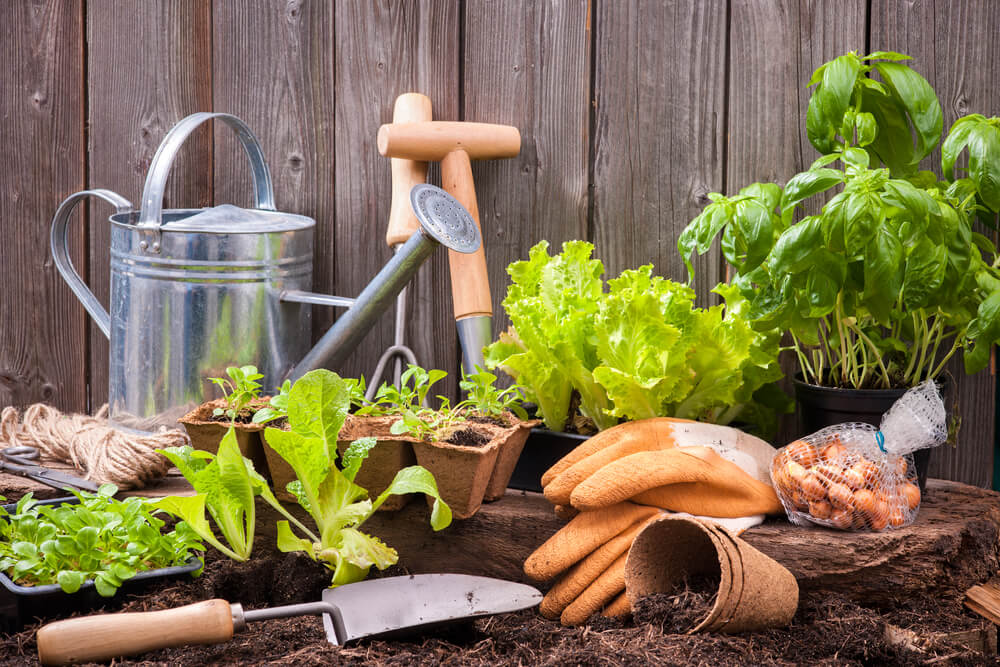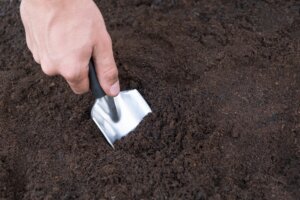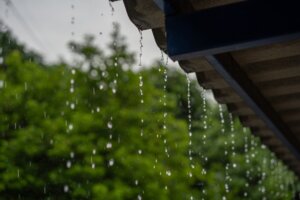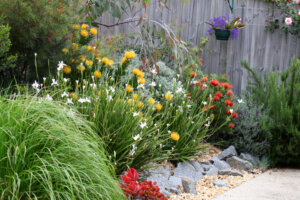More Canadian homeowners are realizing the importance of reducing their carbon footprint and taking personal accountability for the impact their homes have on the environment. Part of this carbon reduction planning takes place in back and front yards in the form of sustainable landscaping. Perhaps surprisingly, if not optimal, your landscaping can actually contribute to pollution and harm the environment.
To reduce your carbon footprint and ensure your landscaping (and hardscaping) is sustainable, consider the following.
Soil
The first thing you should do when planning out your sustainable landscaping is to test your soil. It could be that your soil needs no fertilizing to make it good for growing. If you find that it does need help, consider adding organic materials such as compost rather than artificial fertilizers, even on your lawn.
Avoid chemical nitrogen and phosphorus fertilizers as they can result in ground water pollution when rainwater runs off the garden and dissolves the chemicals into your water supply.
Grass
The U.S. E.P.A estimates that yard waste accounts for 18% of the refuse that is dumped into landfills, rising to 50% during summer. Approximately 75% of this waste is comprised of grass clippings, with the remainder being tree leaves and limbs.
Instead of throwing out your clippings (they result in pollution if allowed to enter ground water), consider using them in your compost, or create mulch out of the refuse. Spreading the clippings on your lawn is a great way to introduce an organic fertilizer on your lawn. To do this correctly you’ll have to mow your lawn more frequently, as clippings which are too long will not break down quickly enough and will result in an unattractive lawn.
Lawn clippings are not eco-friendly as they are washed away with the rain water and decompose in the ground water resulting in pollution.
Remove no more than one-third of the grass blade each time, and spread the clippings evenly over your lawn. You’ll have to mow more often, but you’ll save time as you’ll no longer need to bag your clippings, you’ll save money because you won’t have to buy leaf bags and you’ll save more landfills from filling up with organic clippings that could be helping the environment.
Many homeowners are considering creating a smaller lawn, or foregoing grass altogether in favour of other options such as gardens filled with low-maintenance, easy-care shrubs and native plants. A new trend that we’re seeing at HomeStars is homeowners installing artificial turf instead of grass.
According to our data, Canadians spend about $562 on lawn maintenance each year. The average cost (which is very much dependant on square footage of the lawn) for installing artificial grass is $3,700. Considering that an artificial turf lawn should remain maintenance-free for up to 20 years, this investment should pay off in 6 years, not including deferred water costs.
Water
Collecting and using rainwater is a great way to reduce your water bill. Set up of a rainwater collection system can be simple and inexpensive. Most urban homes do not need sophisticated collection and storage systems. What is required is a roof (or catchment area), a system to move the water (usually eavestroughs), water storage system and finally, a way to get the water to your lawn or garden.
For more detail and a great how-to, check out this great overview by the CMHC.
Plants
At the very least, select native plants for your garden. Research which plants grow in your soil easily and with little need for water or maintenance, or ask your preferred landscaping company.
If you are inclined to reduce your carbon footprint as much as possible, consider Xeriscaping. This form of landscaping is intended to reduce or fully eliminate the need for supplemental water to your garden. Additionally, if your entire garden is xeriscaped, you will eliminate the need for gas mowers, and the need for chemical fertilizers and pesticides. Especially attractive in dry regions where water is in short supply, using the right design and plants can provide a beautiful display without a lot of supplemental water, and effectively reduce your carbon footprint.
Best of luck with your project. If you’re looking to hire a landscaper, click here to get competitive quotes for your job.




